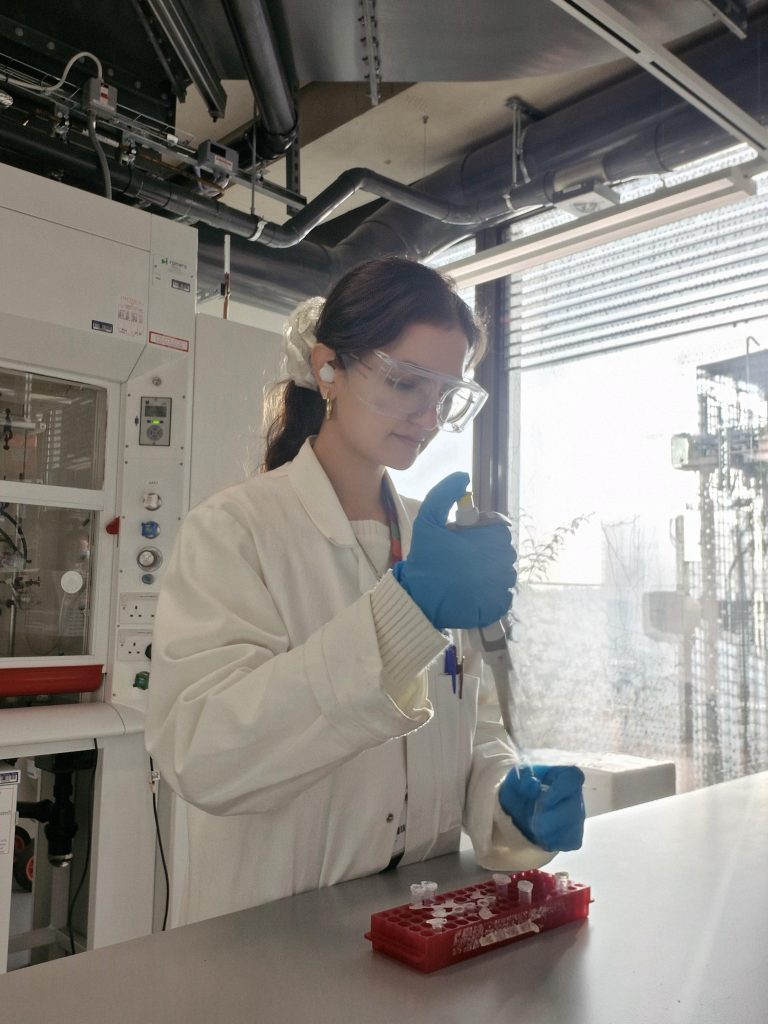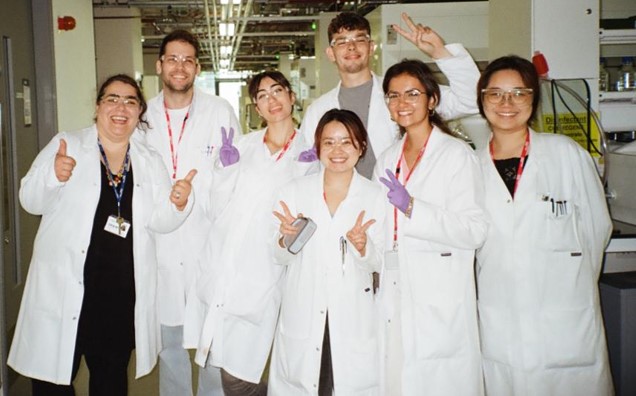PhD student Rupali Dabas explores how targeted drug delivery systems could bring us closer to transformative treatments.

In the Marvel Cinematic Universe, nanotechnology can turn you into Iron Man, shrink you to quantum size, or stitch your wounds in seconds. But in real life? Nanotechnology is more about precision pipetting, atomic-scale headaches, and particles that don’t quite follow the superhero script. In the context of advanced medicine, images of cutting-edge surgeries and futuristic devices often come to mind. But what if I told you that the most exciting innovations in healthcare are happening at a scale invisible to the naked eye?
Nanosized particles are now being engineered to deliver medications directly to diseased cells, sparing healthy ones in the process. Lipid-based nanoparticles (LNPs) have become the unsung heroes of modern medicine. Think of LNPs as tiny cages of fatty compounds, that can safely transport delicate molecules. In COVID-19 vaccines, these contained messenger RNA (mRNA), which convey the blueprints encoded in cells’ genes to their protein-making machinery.
Humble beginnings of targeted medicine
Though their discovery might seem like a breakthrough that appeared overnight, LNP technology has been developing for over six decades, beginning with egg yolk-based studies in the 1960s. In 1977, mRNA – a notoriously unstable molecule – was first encapsulated in thin-membrane structures, similar to those surrounding our cells. By the following year, it was shown that these carriers could deliver mRNA intact into cells and induce protein expression. So there’s our new delivery technology, dating back to the disco era.
The purpose behind LNPs is deceptively simple: to encase delicate molecules like mRNA within tiny protective shells that prevent their breakdown in the bloodstream and safely transport them into cells. Yet, while they’ve unlocked novel regimes treating everything from viral infections to certain cancers, they’re not without limitations.
Achieving active targeting – where LNPs selectively bind to diseased cells – remains a significant challenge. While a few research groups are working to refine these particles for precise targeting across various disease contexts, progress remains slow. The difficulty lies in designing LNPs that can consistently and accurately recognise different cell markers, navigate complex biological environments, and retain efficacy without triggering unwanted immune responses.
Extending the LNP platform to enable active targeting requires overcoming hurdles related to particle stability, specificity, and scalability, a feat that has yet to be widely realised.Researchers are now increasingly exploring alternatives like ‘polymeric drug delivery vehicles’. Polymers are long chains of repeating molecules, and in drug delivery, they can be designed to form tiny structures that carry and release medicine in the body. As we can include different monomers during their synthesis, we can endow them with diverse structural features.
For instance, by including particular peptide sequences within their framework, we can engineer them to degrade in response to specific enzymes present inside cells. As such, polymers offer customisable structures that can be fine-tuned for targeted release of encapsulated cargo. By attaching targeting molecules on their surface, these polymeric carriers can actively seek out diseased tissues, reducing the need for large doses and minimising side effects often seen with other delivery systems, like lipid-based carriers.
Imperial at the forefront
Dr Nazila Kamaly, from the Department of Chemistry, leads a lab specialising in developing such multi-functional polymeric nanoparticles and biomaterials capable of transforming their core structures in response to biological stimuli to enable highly controlled, tissue-specific drug delivery.
I joined the Kamaly lab as a wide-eyed Masters student, imagining myself in a lab coat, curing cancer with a pipette in one hand and a triumphant grin. I turned up to the interview armed with little more than this vision and the knowledge I’d gained from Professor Paula Hammond’s TED talk on using nanoparticles for anti-cancer therapy. Now, having spent over four years developing targeted nanoparticles for RNA delivery to combat prostate cancer, I’ve probably spent more time cursing rogue nanoparticles than celebrating breakthroughs. But for every failed experiment, there’s the thrill of knowing I’m playing with the building blocks of the future.

As SAMURII PhD student, co-supervised by Professor David Carling at the MRC’s Laboratory of Medical Sciences, I am developing a new anti-prostate cancer treatment using polymeric nanoparticles called nanogels. Nanogels are small gel-like structures, that can safely carry delicate molecules, like mRNA and are easily customisable to suit various delivery applications.
In my work, the nanogels are loaded with and RNA encoding for a protein shown to suppress prostate cancer growth and metastasis. Another key aspect of my research involves targeting the nanoparticles to prostate cancer cells, which I have accomplished by coating my nanoparticles with a peptide specific to a receptor ubiquitously expressed on prostate cancer cells. After characterising the structural properties of these targeted nanogels and investigating their biological effects in cell-based models, I’ve now moved on to testing its efficacy in mouse models of prostate cancer.
Despite my progress, the complexities of scaling these nanoparticles for translational applications while maintaining their functionality remain an ongoing challenge. While my nanoparticles haven’t cured prostate cancer (yet!) or replaced LNPs in the clinic, I hope that my research can inspire more talented nanomedicine enthusiasts to extend the applications of this technology, pushing us closer to therapeutic solutions once relegated to science fiction. Nanomedicine is not just about miniscule particles – it’s about turning the tiny into the transformative.